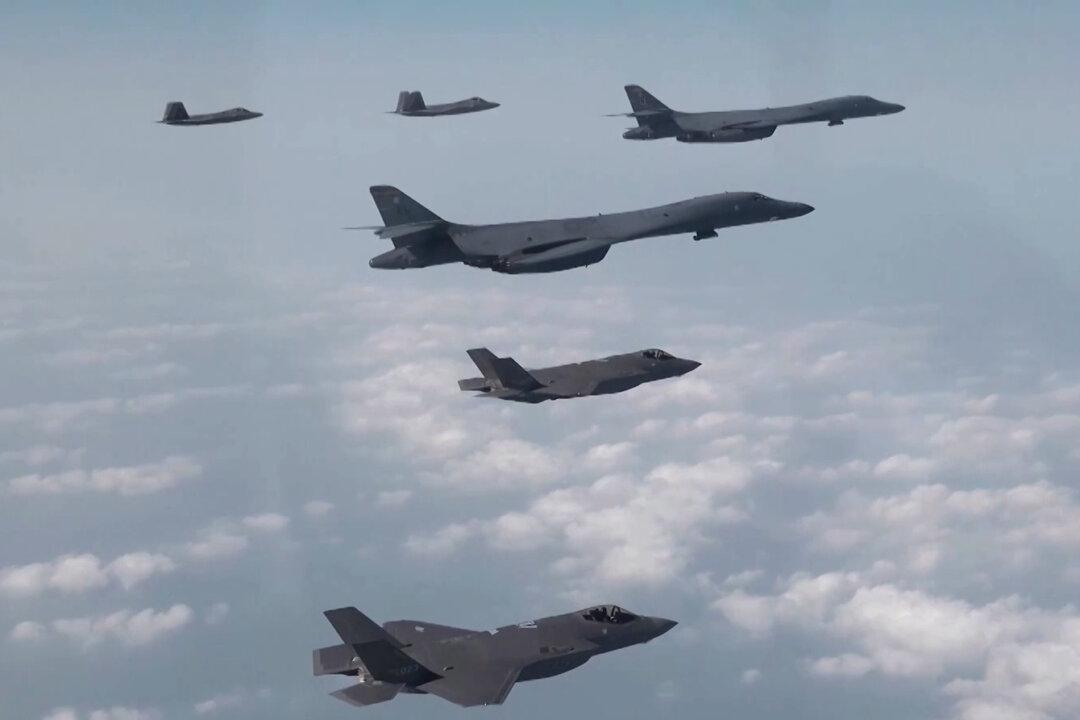The United States deployed F-22 fighter jets to the Middle East this week as part of a “multifaceted show of U.S. support and capability” amid “increasingly unsafe and unprofessional behavior” by Russian aircraft in the region.
The F-22 Raptors, from the 94th Fighter Squadron out of Langley Air Force Base, Virginia, will be demonstrating America’s ability to “re-posture forces and deliver overwhelming power at a moment’s notice,” U.S. Central Command (CENTCOM) said in a June 14 statement.





